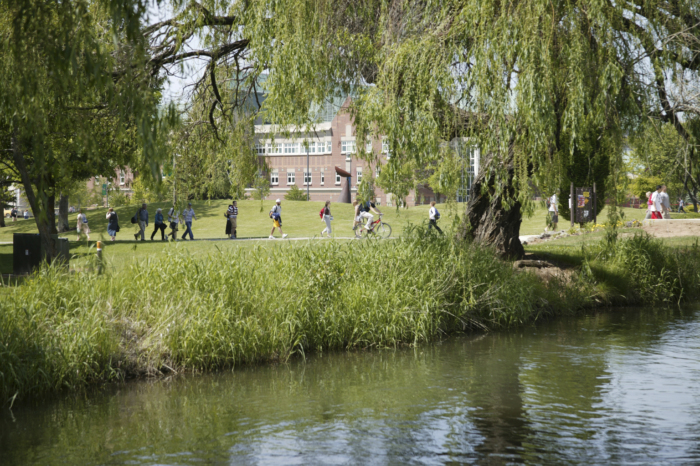
Good question. According to Central Washington University Library and Archives, the ditch has been called the “Ganges” since at least the early 1960s. Apparently, the name was concocted as a tongue-in-cheek reference to the ditch’s water quality, which reminded some students of the polluted Ganges River in India.
Over the years, some, however, have thought the name was disrespectful. Former CWU professor Mark Auslander noted in a 2014 article in The Observer, “the Ganges is the most sacred river in India. There’s a sneering tone when Americans use that term here about the irrigation canal.”
In one 1960s-era Campus Crier (precursor to today’s Observer student newspaper) article, Ellensburg pediatrician Dr. Rudolf Vernie, who operated the campus infirmary for more than a decade, studied the water of the Ganges and found that it contained traces of leptospirosis from cattle, tularemia (also known as Rabbit Fever), tetanus, streptococcus, typhoid fever, and Bacillus coli. Of the latter, the paper said, “Bacteria count should be not more than 1:100 ratio for swimming, the Ganges is in a ratio of 1:12,000.”
The ditch’s original name was the Ellensburg Town Canal or Town Ditch. It was dug in 1885-1889 to irrigate some 7,000 acres of farm land. The ditch, now officially called the Ellensburg Water Company Canal, stretches from the Yakima River, just south of Thorp, then south, through CWU and Ellensburg, and ends near Thrall Road.
In addition to naming the campus portion of the ditch, Central students over the years have attempted to jump across its span, which can be challenging. Others have floated down the canal in innertubes. In a 1961 Hyakem yearbook, there is also mention of how getting dunked in the canal is part of an initiation for new student residents of Montgomery Hall. (Yuck!)
In recent years, student groups, such as the Green Thumb Ganges, have conducted annual canal clean-ups, usually in the spring, to remove debris and litter from the waterway.






comments powered by Disqus